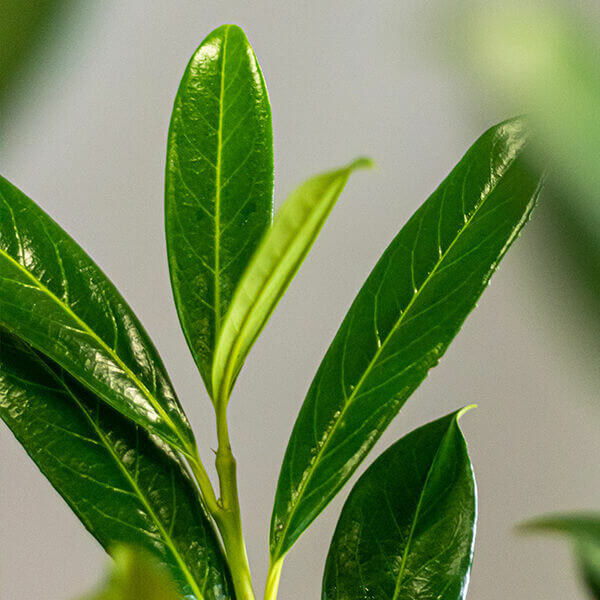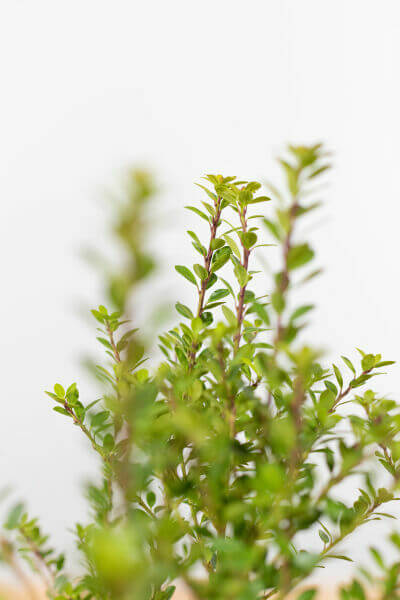Hedge Plants For Decorative Landscaping
Improve your garden's appeal with rich hedge ranges such as Yew (Taxus), Thuja, Laurel, Photinia, and Bamboo, celebrated for their structural integrity and environmental benefits.
Yew and Thuja supply evergreen protection and winter resilience, while Laurel uses rapid development and broad, fragrant leaves.
Photinia adds seasonal beauty with its vibrant red foliage, and Bamboo provides a low-maintenance, tranquil atmosphere.
These hedges enhance air quality, decrease sound, and create tranquil, private areas.
Proper planting, spacing, and upkeep make sure vigorous development and ecological harmony.
Explore how these rich ranges can raise your garden's beauty and well-being.
Secret Takeaways
Change Your Garden With Lush Hedge Varieties
- Select Yew for its thick, evergreen development and unrivaled longevity.
- Go with Laurel for its quick growth and broad leaves, ensuring quick privacy.
- Select Photinia for its lively seasonal foliage, which turns a striking dark red.
- Make use of Bamboo for a low-maintenance, winter-hardy hedge with visual appeal.
- Area plants 2-3 per meter and prune routinely for optimum development and health.
Popular Hedge Plants
When transforming a garden with lush hedge varieties, it's important to think about popular hedge plants such as Yew, Thuja, Laurel, and Photinia due to their distinct qualities and advantages.
Yew (Taxus) is extremely respected for its durability and thick, green development, making it a prime option for sustaining landscapes.
Thuja is kept in mind for its evergreen foliage and robust winter strength.
Photinia adds seasonal vibrancy with red leaves that darken gradually, producing vibrant visual appeal.
Laurel provides fast growth and fragrant, broad leaves, ideal for fast personal privacy.
Additionally, Bamboo is an excellent option for atmosphere, providing a low-maintenance, winter-hardy choice that enhances the garden's visual with its classy, swaying walking canes.
These selections cater to a range of horticultural requirements and preferences.
Advantages of Garden Hedges
Garden hedges provide a wide variety of benefits, making them an important addition to any landscape. These natural barriers are economical to implement and supply considerable wind protection, boosting air flow and adding to noise decrease. The dense foliage of hedges like Thuja and Beech makes sure personal privacy by obstructing exposure, creating a tranquil and secluded environment.
Hedges likewise play a crucial function in microclimate regulation, supplying a stable environment that promotes plant development and reduces temperature level fluctuations. Their complex leaf structures filter pollutants, improving air quality and adding to a healthier garden community.
Additionally, hedges master noise reduction, absorbing and deflecting sound waves to lower ambient sound levels. This dual performance of providing both acoustic and visual personal privacy boosts the total tranquility and aesthetic appeal of any garden.
Planting and Maintenance Tips
For an effective hedge, careful preparation of the planting location is essential. Guarantee the soil has appropriate pH and drain to support strong root advancement.
Area the plants appropriately for the chosen species. Water the hedge often during its initial growth phase, changing as required with seasonal modifications.
Carry out a systematic pest control and disease prevention strategy, utilizing chemical or organic treatments when necessary. Regularly inspect for aphids, termites, and fungal infections.
Apply mulch to maintain wetness and reduce weeds. Seasonal pruning promotes thick growth and air flow, vital for plant health.
Following these guidelines will help you cultivate a vibrant, well-maintained hedge that enhances the appeal of your garden.
Spacing and Cutting Standards
Spacing and Cutting Standards
Correct spacing and trimming are essential for cultivating healthy, visually appealing hedges. Adequate spacing makes sure each plant receives sufficient nutrients, light, and airflow.
Follow these guidelines for ideal hedge maintenance:
- Spacing: Position hedge plants 2-3 plants per meter to encourage robust development.
- Pruning Methods: Regular pruning is essential for keeping preferred hedge height and shape. Trim brand-new development in summer season and cut back older wood during winter season.
- Seasonal Care: Change cutting methods and schedules according to seasonal requirements to make sure plant health.
- Hedge Height: Regularly display and trim to keep the preferred hedge height and attain uniform aesthetics.
Adhering to these actions will ensure your hedge prospers, enhancing both the appeal and functionality of your garden.
Picking the Right Hedge
Choosing the Right Hedge
Choosing the appropriate hedge involves examining factors such as mature height, foliage density, and ecological resilience. Successful hedge plant choice needs understanding each species' development characteristics and site-specific versatility.
For instance, Yew (Taxus) offers excellent durability and dense growth, while Thuja is significant for its winter durability. In addition, considering maintenance requirements is essential; fast-growing types like Laurel or Privet need routine cutting, whereas low-maintenance options like Bamboo or Ivy might be more suitable for those looking for very little maintenance.
Ecological elements such as soil type, light schedule, and wetness conditions need to likewise assist the selection process. This careful approach ensures the chosen hedges will thrive, providing both aesthetic and functional advantages to the garden landscape.
Shipment and Planting Advice
To guarantee your hedge plants grow, they need to be provided by specialized couriers and planted immediately upon arrival.
Follow these vital steps for successful planting:
- Soil Preparation: Improve the soil with raw material to improve drainage and nutrient content.
- Planting Depth: Create a trench two times the width and equivalent to the depth of the root ball.
- Watering Strategies: Water completely after planting, keeping the soil consistently wet however not filled.
- Mulching: Apply a layer of mulch to maintain wetness and suppress weeds.
Consumer Support and Service
Given the vital role of timely support in horticultural pursuits, our customer assistance team is available 6 days a week through telephone, email, and social networks to offer skilled recommendations and swiftly attend to any concerns. Their devotion to quick action times ensures consumer complete satisfaction by resolving inquiries related to plant health, ideal planting approaches, and upkeep schedules.

Email
This detailed support system, reinforced by a stellar 9.3/ 10 client score, highlights our commitment to improving the gardening experience for every customer.
Frequently Asked Concerns
For How Long Does It Consider Hedge Plants to Establish?
Hedge plants generally need one to three years to become totally established, with the specific duration differing by species and growing conditions.
Reliable care during this important period is vital for robust development. Consistent watering, alert weed control, and proper fertilizer application are pivotal in promoting strong root advancement.
For instance, fast-growing species like Laurel might develop faster, while slower-growing ranges such as Yew may take longer. Thorough upkeep speeds up the facility process, leading to healthy and dense hedges.
What Are the very best Hedge Plants for Personal Privacy?
The question of the best hedge plants for privacy includes evaluating evergreen and deciduous choices.
Evergreen hedges like Thuja, Laurel, and Cypress offer year-round protection, making sure continuous privacy.
In contrast, deciduous hedges such as Beech provide seasonal personal privacy, shedding leaves in cooler months.
Secret upkeep tips for privacy hedges include regular trimming, fertilizing in spring, and proper spacing-- usually 2 to 3 plants per meter.
In addition, constant watering and thorough weed elimination are important for promoting healthy, thick development.
Can Hedge Plants Draw In Wildlife to My Garden?
Yes, hedge plants can draw in wildlife to your garden by offering vital benefits like shelter, food, and nesting sites, thus enhancing local biodiversity. Yew, holly, and laurel are outstanding for bring in birds, while ivy supports a range of bugs.
However, it is very important to keep in mind that there are some downsides, such as increased maintenance to manage bugs and routine upkeep. Carefully picking and preserving hedge varieties can assist balance these downsides and advantages, eventually fostering a vibrant and sustainable community in your garden.
Are There Any Flowering Hedge Plants Available?
Yes, there are flowering hedge plants available that can boost the charm of your garden.
For example, Elaeagnus, likewise understood as Olive Willow, produces fragrant white flowers in the fall, adding a touch of elegance.
Photinia, another popular option, showcases dynamic red leaves that grow into a rich green, creating a dynamic visual result throughout the seasons.
To guarantee these plants grow, it's vital to practice proper pruning methods and seasonal maintenance, such as cutting new development in the summer and cutting back in the winter season.
These measures will help maintain the health and aesthetic appeal of your blooming hedges.
How Do I Avoid Pests in My Hedge Plants?
To avoid bugs in hedge plants, employ natural pest control techniques and keep proper hedge care. Introduce helpful insects like ladybugs, which take advantage of damaging bugs, to create a balanced community.
Regularly inspect your hedges for signs of invasion and without delay get rid Additional info of any affected parts to prevent the spread. Ensure the health of your hedges by applying balanced fertilizers and offering sufficient water.
Use mulching to keep soil wetness and appropriate spacing to lower plant tension and promote robust development. These practices jointly assist in lessening insect problems and preserving a healthy hedge.
Conclusion
In essence, selecting the best hedge varieties such as Yew, Thuja, and Laurel can transform any garden into a peaceful haven. These plants provide year-round greenery, boost visual appeal, and deal practical benefits like sound reduction and wind defense.
Correct planting methods, accurate spacing, consistent watering, and seasonal cutting are crucial for ideal growth.
Reputable delivery services and skilled client support ensure a smooth experience from purchase to planting, making it simpler than ever to elevate your outside space.
Garden hedges use a plethora of advantages, making them an important addition to any landscape. These natural barriers are affordable to implement and supply considerable wind protection, improving air circulation and contributing to sound reduction. The thick foliage of hedges like Thuja and Beech guarantees personal privacy by obstructing presence, producing a serene and secluded environment.

Pruning Strategies: Routine pruning is essential for keeping wanted hedge height and shape. Cut new growth in summer season and cut back older wood throughout winter season.